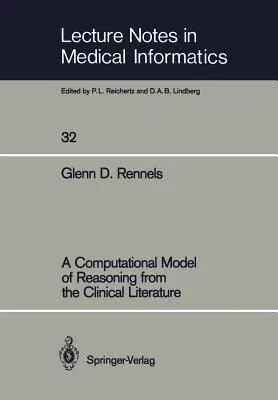Glenn D Rennels
(Author)A Computational Model of Reasoning from the Clinical Literature (Softcover Reprint of the Original 1st 1987)Paperback - Softcover Reprint of the Original 1st 1987, 3 June 1987

Qty
1
Turbo
Ships in 2 - 3 days
In Stock
Free Delivery
Cash on Delivery
15 Days
Free Returns
Secure Checkout
Part of Series
Lecture Notes in Medical Informatics
Print Length
230 pages
Language
English
Publisher
Springer
Date Published
3 Jun 1987
ISBN-10
3540179496
ISBN-13
9783540179498
Description
Product Details
Author:
Book Edition:
Softcover Reprint of the Original 1st 1987
Book Format:
Paperback
Country of Origin:
DE
Date Published:
3 June 1987
Dimensions:
24.41 x
16.99 x
1.35 cm
ISBN-10:
3540179496
ISBN-13:
9783540179498
Language:
English
Location:
Berlin, Heidelberg
Pages:
230
Publisher:
Weight:
408.23 gm

